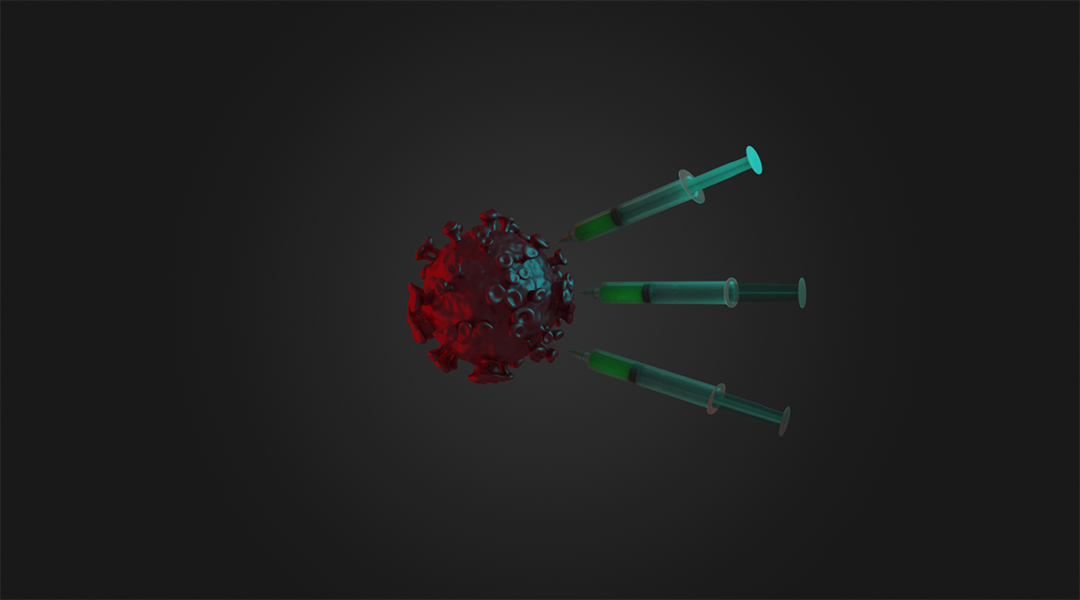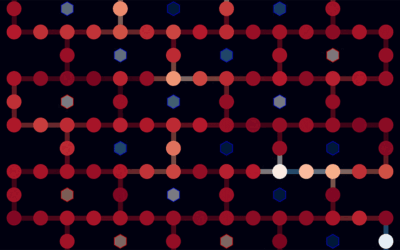Since the onset of the COVID-19 pandemic, mathematical modeling has played an important role in assisting policy decision making by providing forecasts for the outcomes of different public health measures, such as contact tracing programs, implementing non-pharmaceutic interventions (i.e., mask requirements and social distancing rules), as well as vaccination campaigns.
Maurizio Porfiri and his international team of researchers at NYU Tandon School of Engineering, University of Groningen, Northern Illinois University, Universitá Cattolica del Sacro Cuore, and Politecnico di Torino have been working diligently to develop accurate, open-source modeling platforms to help shape and inform on an unprecedented situation. In January 2021, his team published an agent-based model that predicted the spread of COVID-19 within a digital population, and used it to help understand effective vaccination strategies at a time when available doses were limited.
Tracking waning immunity and the effectiveness of COVID-19 boosters
Now, they have turned their attention to the issue of waning immunity, which along with global vaccine inequity and the emergence of new variants combined with lifting public health measures, is creating uncertainty with regards to an end to the pandemic.
“During 2021, vaccines have been tremendously effective in reducing the infections and hospitalization due to COVID-19, allowing for a gradual reopening of the economy and return to normalcy,” said Porfiri in an email. “However, the efficacy of these vaccines wanes after some months, in particular for the newly dominant Omicron strain, calling for the administration of COVID-19 boosters. Not surprisingly, it seems that the efficacy of the current booster shot could also be limited in time. Hence, tracking waning immunity and understanding how to deal with it is key to keeping the economy open and regaining our pre-COVID lifestyles, mitigating the risk of surging of future epidemic waves.”
In their study, recently published in Advanced Theory and Simulations, they explored the interplay and outcomes of elements currently presenting themselves at this point in the pandemic: waning vaccine-induced immunity, reduced testing, and a push for COVID-19 boosters.
The scenario follows a 6-month projection that simulated the spread of COVID-19 under different situations in a medium-sized US town, specifically analyzing the effectiveness of a booster campaign during the 2021/22 fall and winter seasons.
“Our high-resolution agent-based model consists of a one-to-one simulation of the US town of New Rochelle, where a single virtual agent corresponds to an individual and can statistically mirror their behavior,” explained Lorenzo Zino, one of the study’s authors. “We generated digital versions of different residential and public buildings in the town and of many of the characteristics of its population, from age, to occupation, and commutes.”
Modeling an evolving pandemic
This digital New Rochelle proved to be an accurate test bed for observing the outcomes of different COVID-19 events and mitigation strategies.
“Two key strengths of our model are the free availability and flexibility of the software,” added Sachit Butail, another of the study’s contributors. “Anyone can use our software to test many different scenarios and evaluate the impact of different policies in a realistic urban environment. In particular, projected scenarios can be used by policy makers to devise intervention policies.”
In the current study, the team modeled the effects of waning immunity while also taking into account rates of COVID-19 boosters and testing practices. Their findings, they say, were twofold: while the model predicted the importance of implementing a booster vaccine campaign to counter waning immunity, it also confirmed the importance of testing — especially for detecting asymptomatic individuals — as seen in the findings of the team’s previous work.
“To sum up, our model [of the simulation’s population] offers evidence for the combination of a swift booster vaccine campaign and efficient testing as the most effective strategy to face new COVID-19 waves, reducing the risk of requiring harder lockdown measures, which could be extremely harmful economically and psychologically,” said study author Alessandro Rizzo.
Nuances in the booster debate
While this model provided helpful insights, the authors acknowledge its limitations. Though calibrated in real data collected during the summer of 2021, the high resolution of the model comes as a result of a series of assumptions. Among them, the timing of waning immunity was modeled using educated guesses given limited data. Additionally, except for waning immunity benefits, the simulation’s parameters did not change with time — meaning they did not account for variations in behavior, such as the use of non-pharmaceutical interventions, vaccination rates, or testing, as a result of changing or emerging situations.
“We acknowledge that our model, in its current form, does not accurately reproduce the epidemic data observed in fall/winter 2021,” they wrote in their paper. “At the time of our simulations and writing, we did not observe the surge of the Omicron variant, while testing and containment policies have dynamically changed several times during the entire simulation window.
“However, additional simulations […] confirm the robustness of our findings with respect to many potential confounds, supporting the qualitative reliability of our projections.”
The team also highlight the fact that the debate around booster vaccines is highly nuanced, and the data presented here needs to be considered with respect to an evolving situation. For example, what are the ethics around distributing COVID-19 boosters in wealthy nations when only 5% of populations in low-income countries are fully vaccinated, especially when vaccine inequity has been linked to the emergence of new, more infectious variants.
There is also lingering concern about the significance of waning antibody levels in vaccinated individuals. Neutralizing antibody titres are expected to decline following vaccination; however, a longer-lived memory cell response has been shown to increase in the months following mRNA vaccination. While these evolved immune responses might not limit the risk of transmission, studies indicate that persistent T cell levels generated after just two vaccine doses still provide protection from severe illness and death.
Models such as the one developed by Porfiri’s group could help provide clearer answers when applied to these specific situations. As previously stated, the fact that the software is open access means that anyone can use and apply it.
“Our advice is to stay vigilant, […] and it is very important to continue updating the models and run prediction scenarios to monitor the situation,” said Porfiri. “The evolution of a pandemic is a highly complex and nonlinear phenomenon, and even little changes in the present conditions may cause significant impact on how the epidemic evolves.”
Reference: Agnieszka Truszkowska, et al., Predicting the Effects of Waning Vaccine Immunity Against COVID-19 through High-Resolution Agent-Based Modeling, Advanced Theory and Simulations (2022). DOI: 10.1002/adts.202100521

















